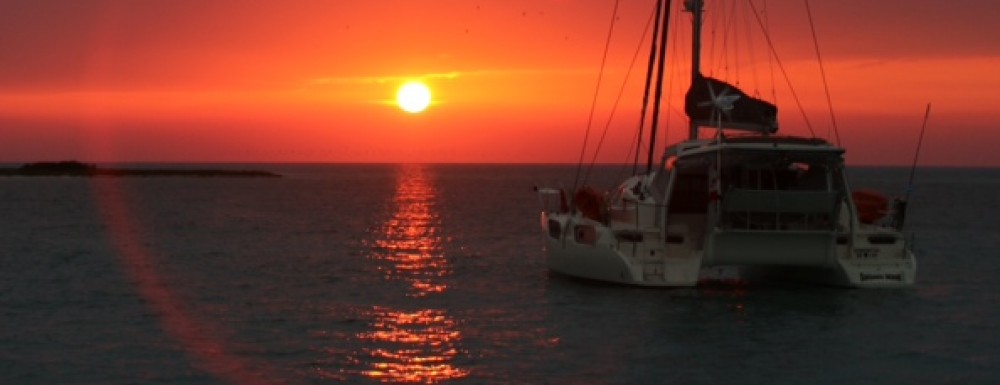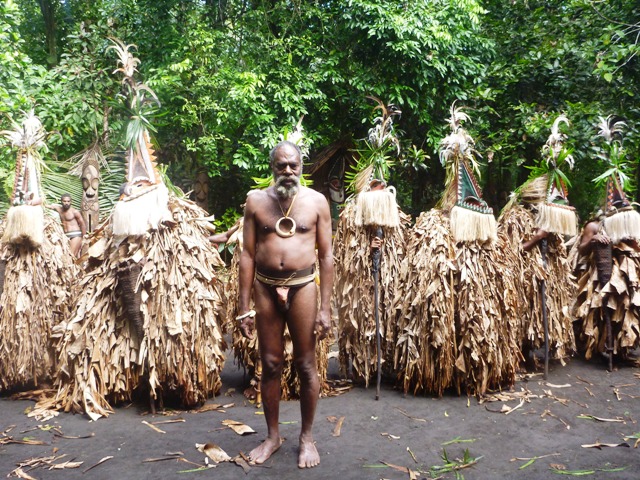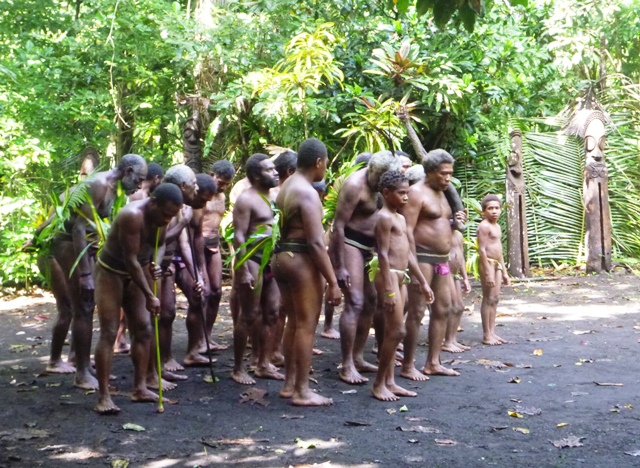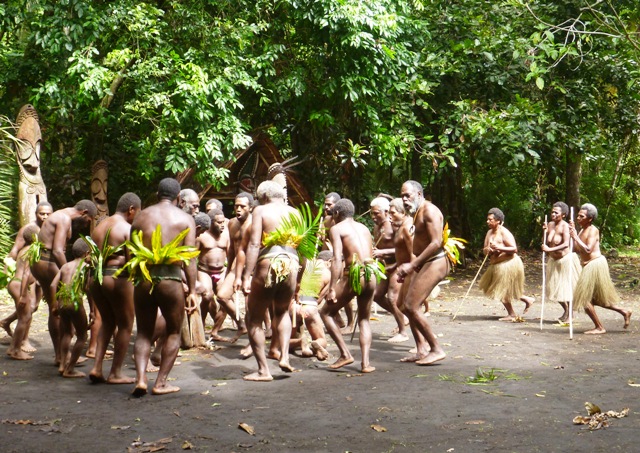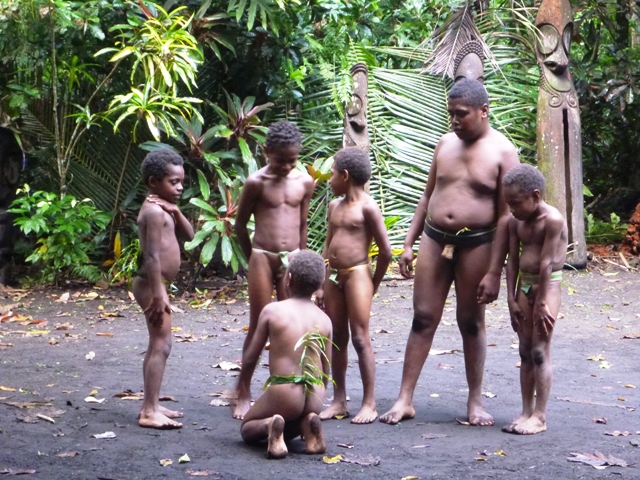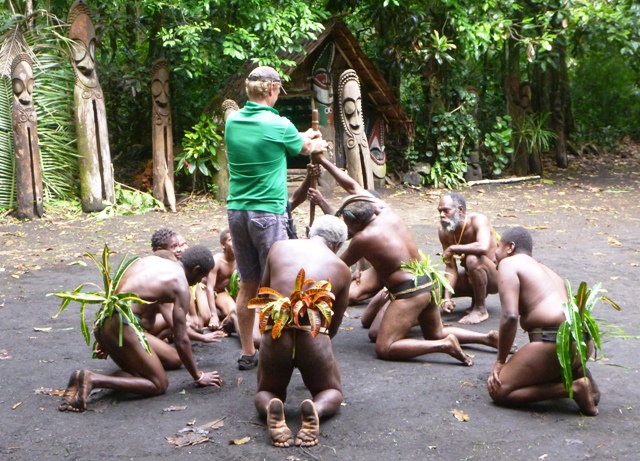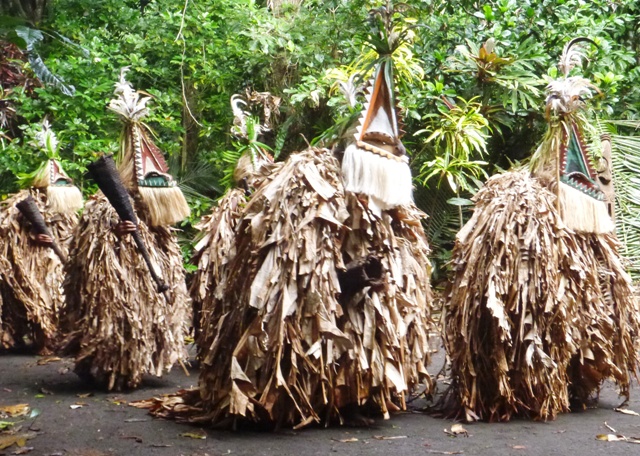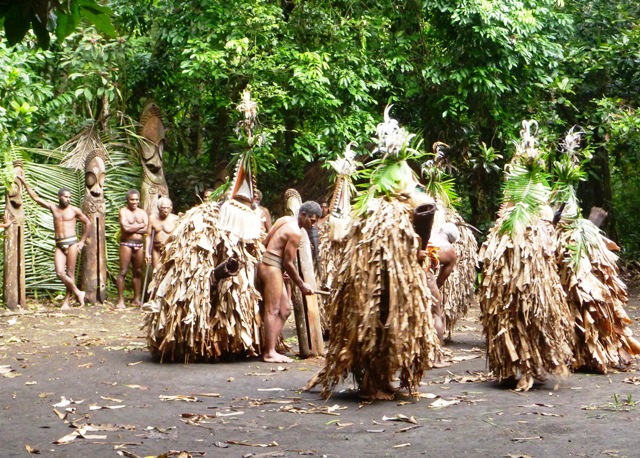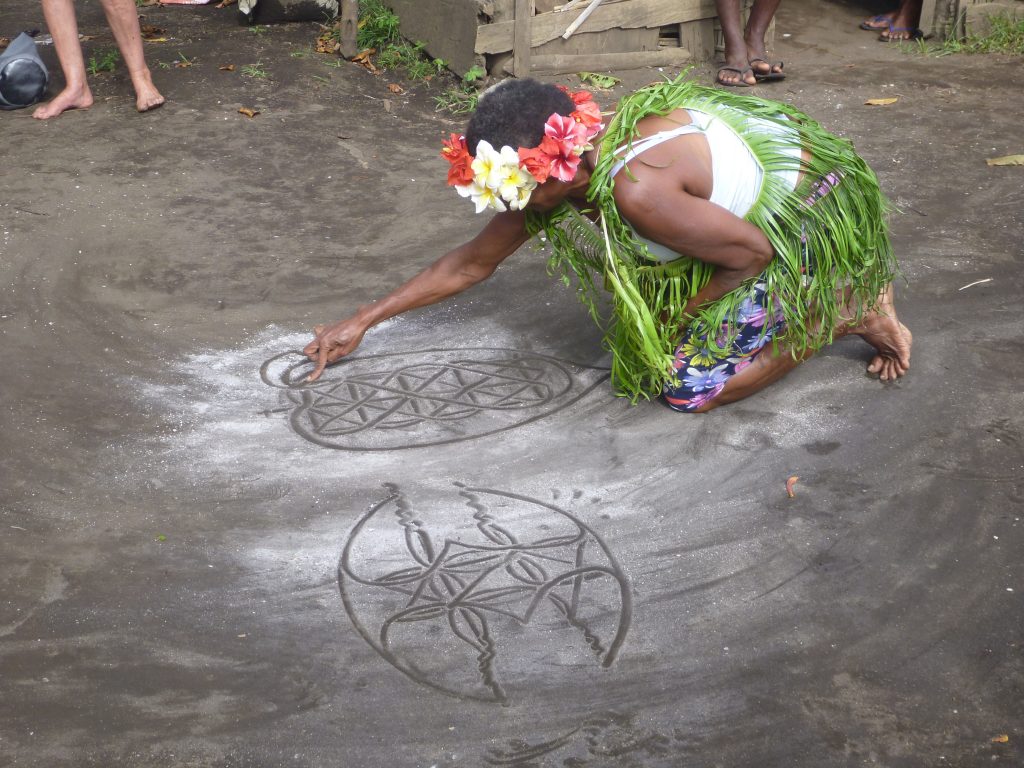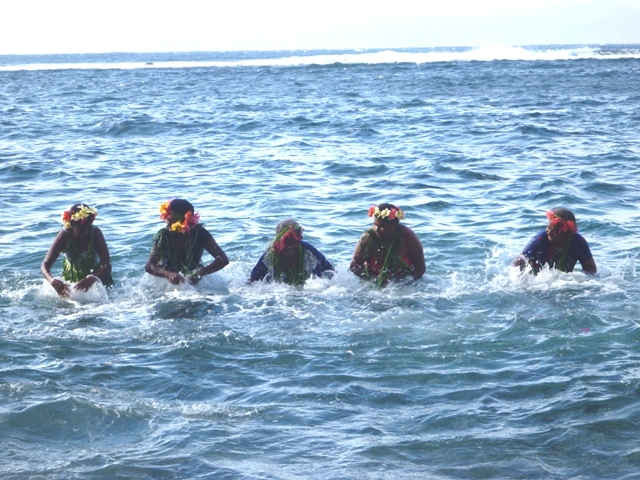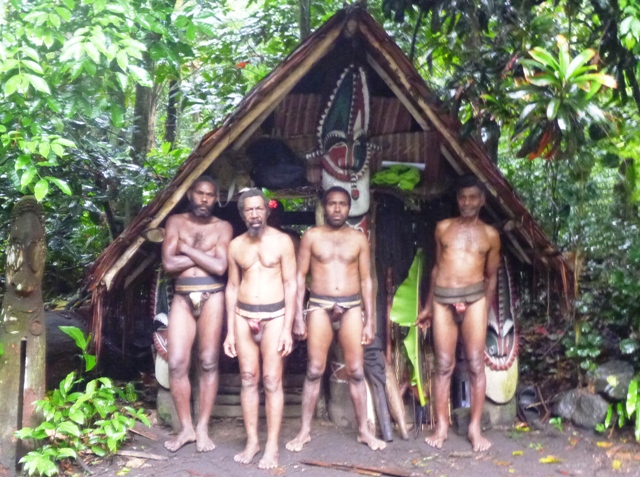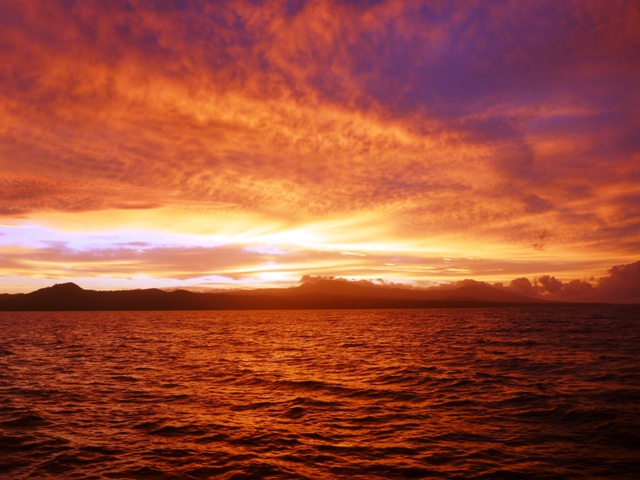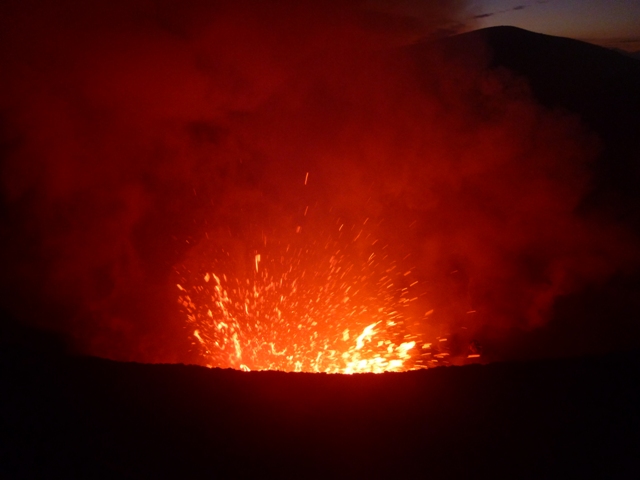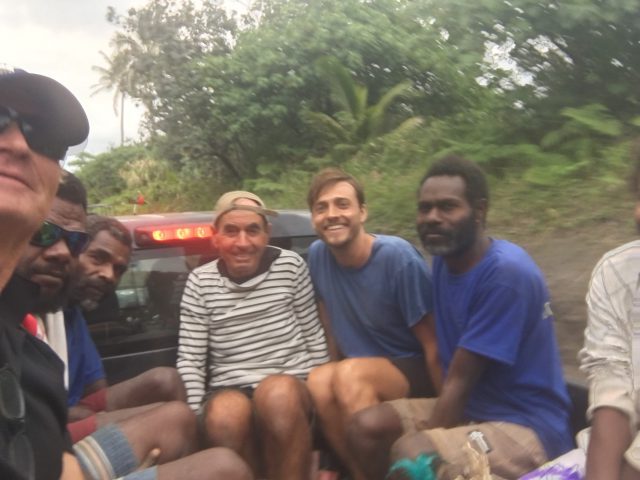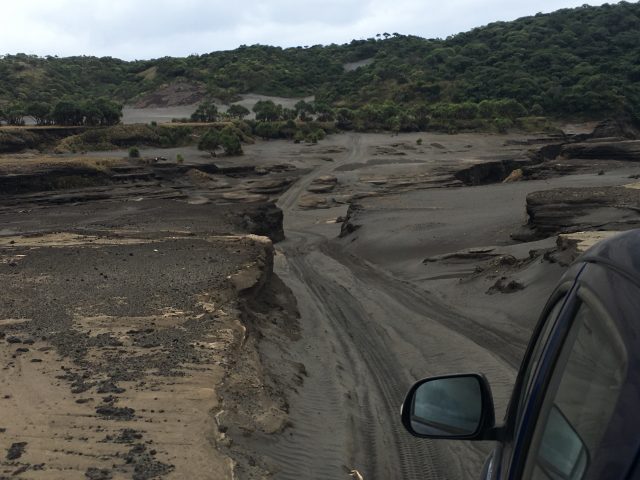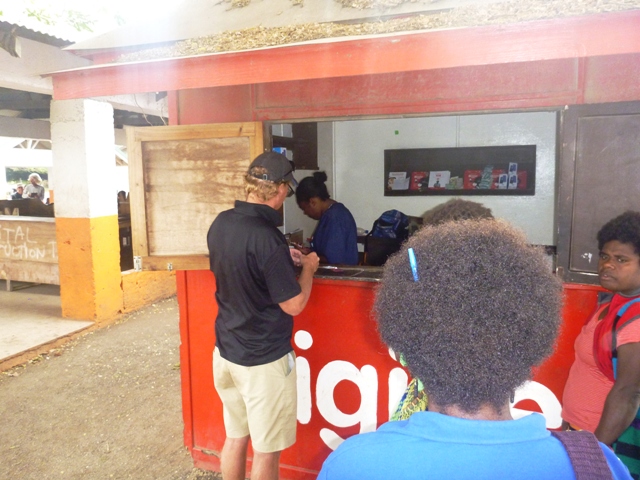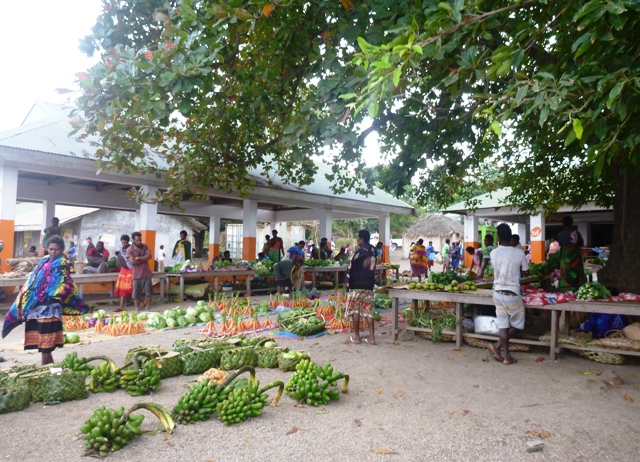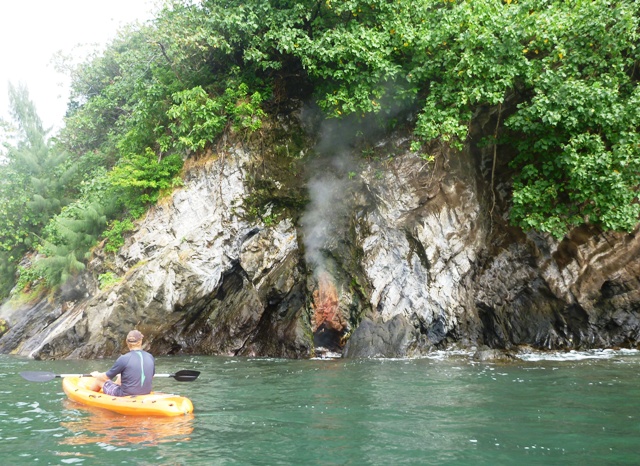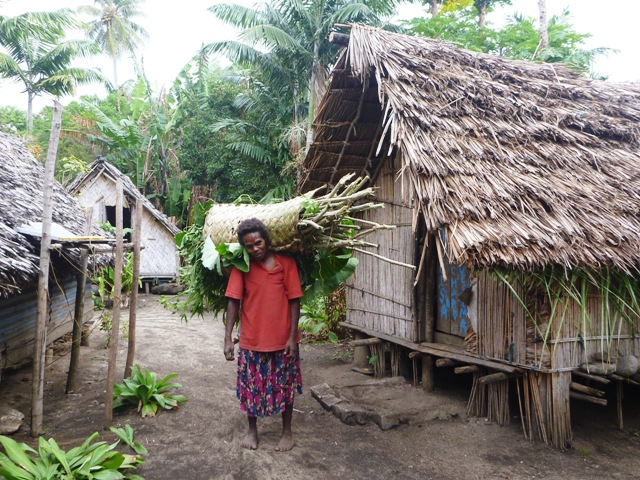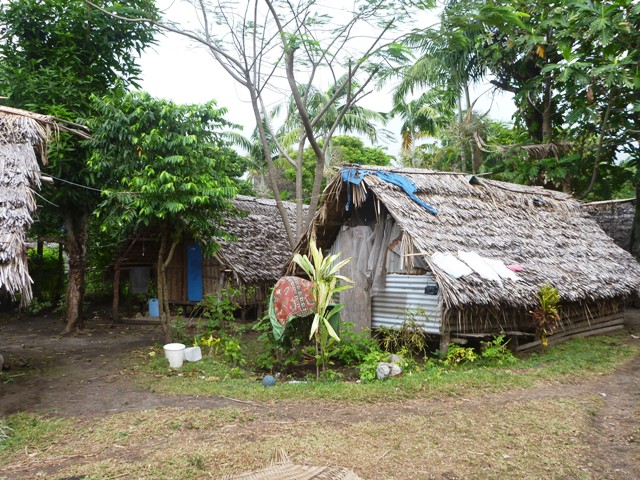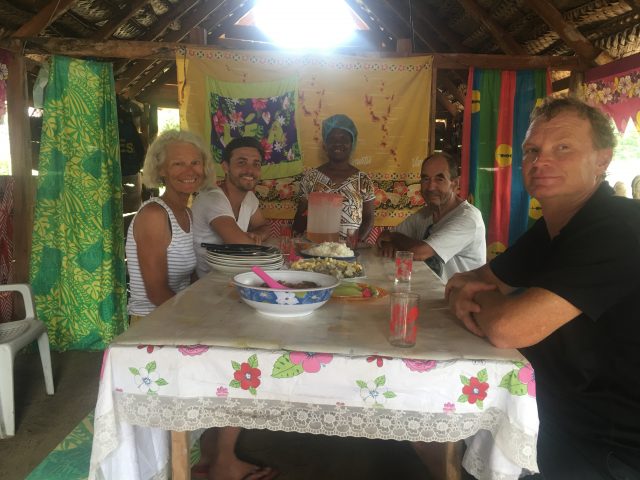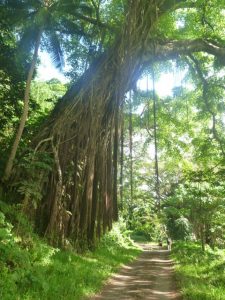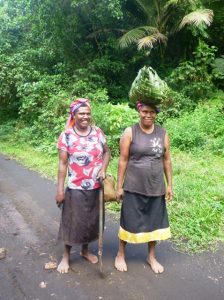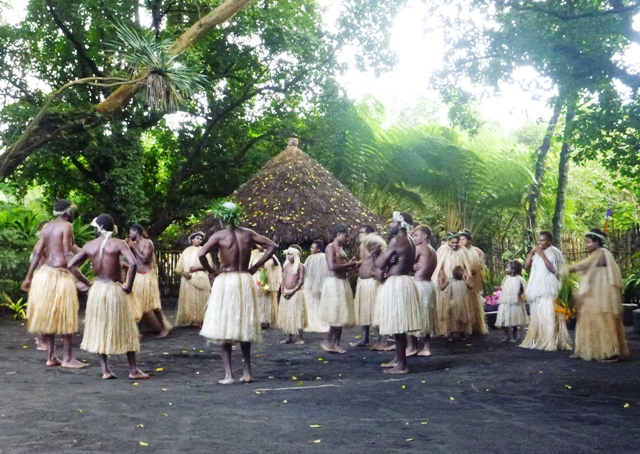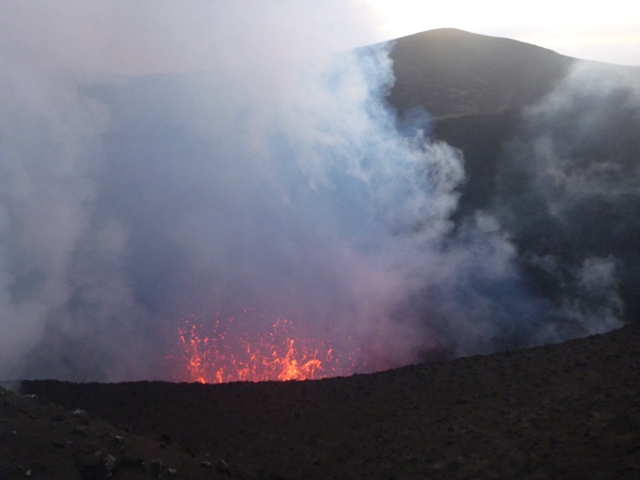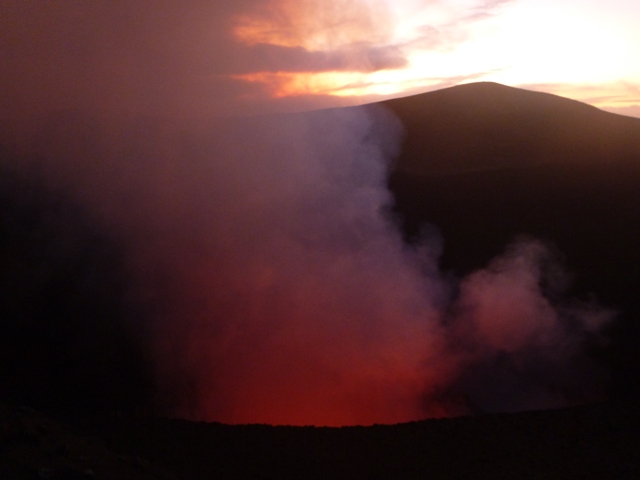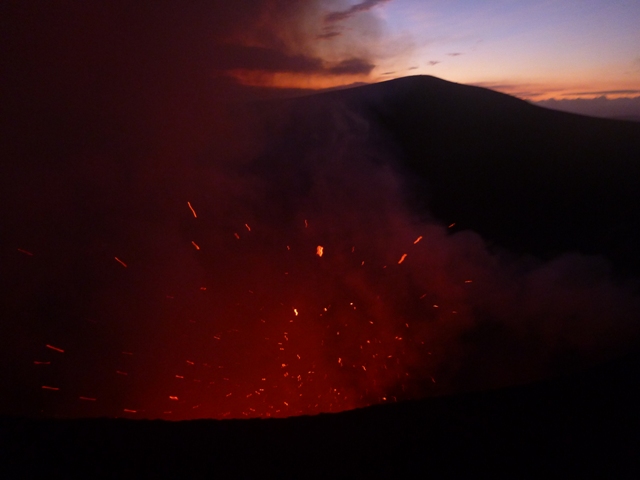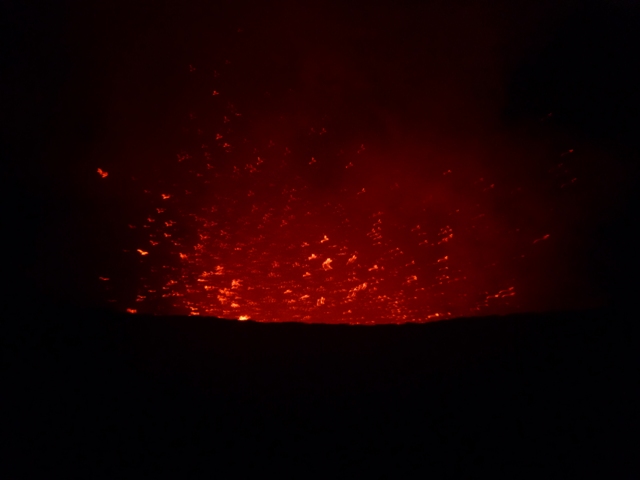With only a 30 day visa to see Vanuatu we chose a couple of islands to go to after Tanna for the volcano and Ambrym for the Back to My Roots Festival. We used the winds to help us get places knowing we needed to return to Port Villa to check out.
Efate
Mele Bay is just North of Port Villa and was a nice sheltered bay for a stop when we were making our way North after Tanna. The perfect place to hide out from NE winds before heading towards Ambrym. A long beach to stretch our legs and the Beach Bar ashore was great for a nice cold drink, entertainment in the evenings and good views. They put on a few shows to get people in, the most popular being the fire show on Friday nights.
From Mele we caught the local bus into Port Villa to see the big smoke and do something a little different as a tour. Buggy Fun Adventures had an afternoon Jungle Safari tour that was a great way to see Port Villa town including buzzing around the countryside to see the views and out to the beach. The local kids gave us a hi fi along the way with lots of friendly locals who smiled and waved at us.
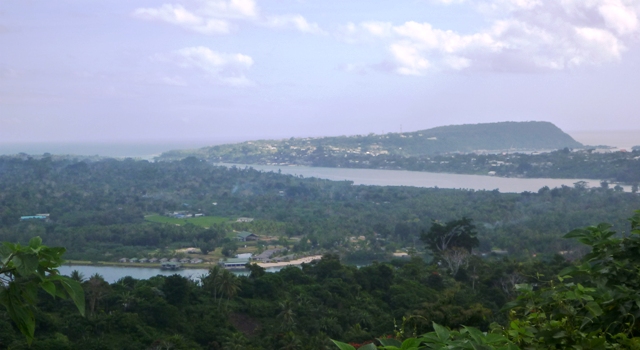
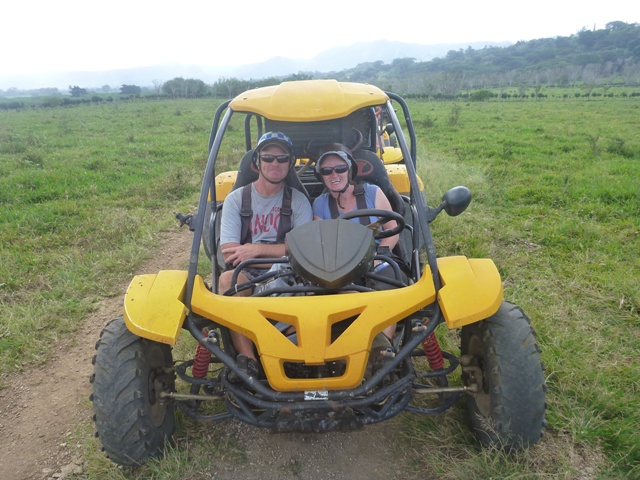
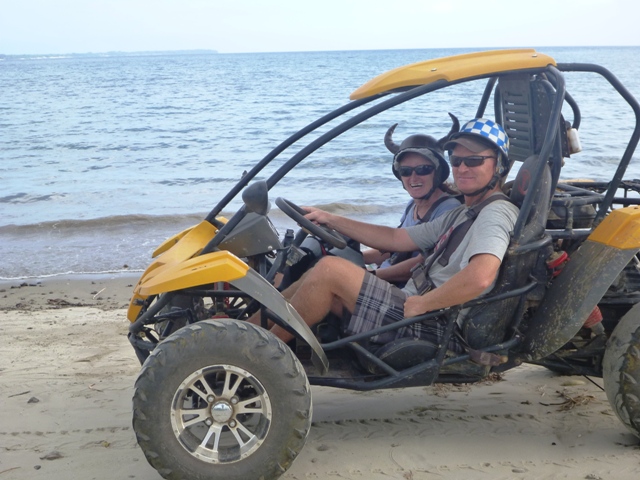
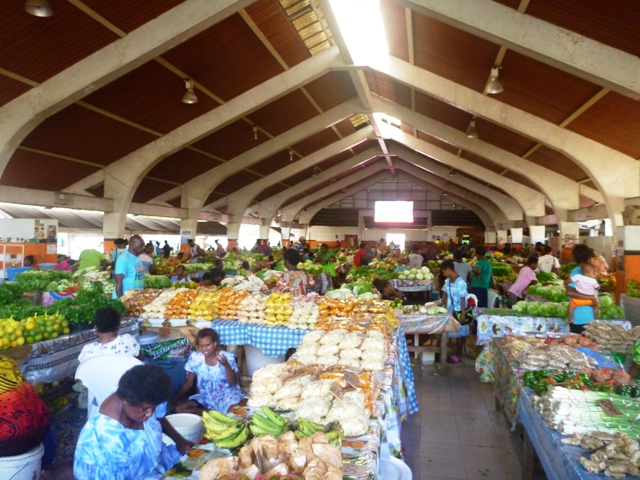
Port Sandwich, Malekula
After the Ambrym festival we headed to Port Sandwich and went up past the main village to the end of the bay. It felt like we were in the jungle with mountains surrounding us. The kayaks were good for some exercise and getting to the far end of the bay and into the mangrove lined river.
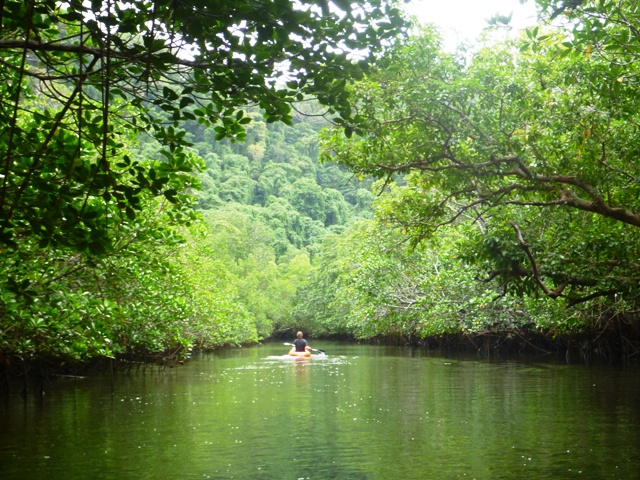
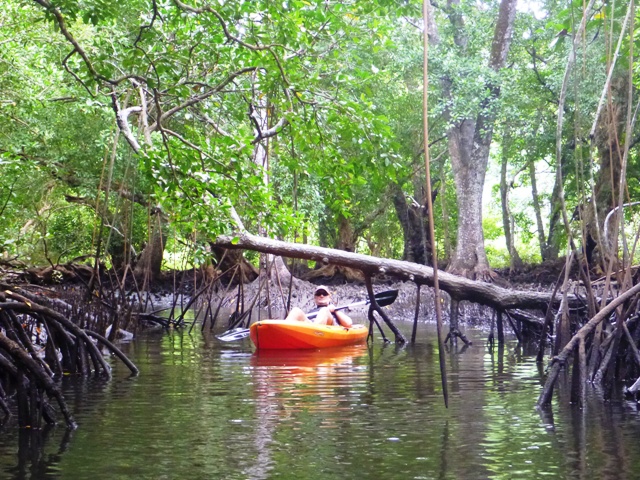
The kids (or pikanini as the family called them) from the plantation close to where we were anchored paddled out with 2 baskets of fruit, coconuts, eggs and nuts and invited us to come ashore to meet the family.
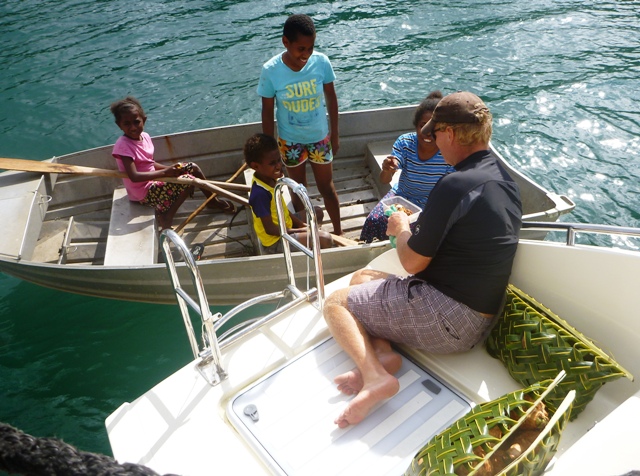
Ashore there was a small protected area with 3 buildings, including a church and the hillside was covered in coconut trees. Very pretty area.
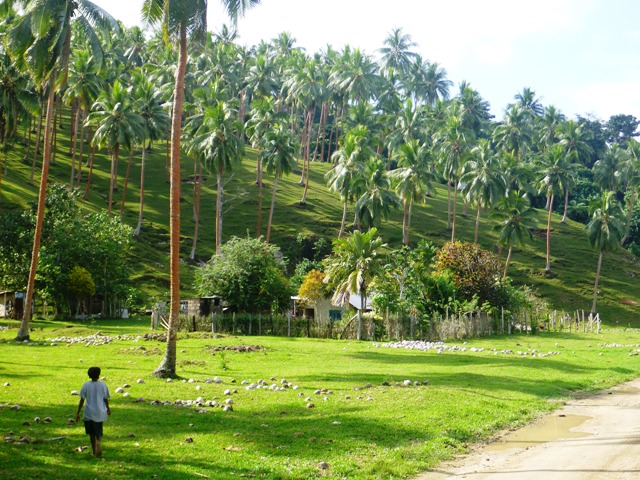
It was interesting sitting talking to the family who appeared to be a lot better off than some Vanuatu families we met along the way. The school closest to the farm is taught in French so we struggled to talk to the children while Bernadette, Suzanne and Simon spoke excellent English. Bernadette had come to this part of the island in 1970 with her Anglo husband and they had cleared and replanted the lands with vegetable plots and coconut trees for producing copra. Her husband passed on in 2016 at the age of 86 so farming was obviously good for him. Suzanne was from Santo and been with the family helping Bernadette with chores, farming etc for the past year.
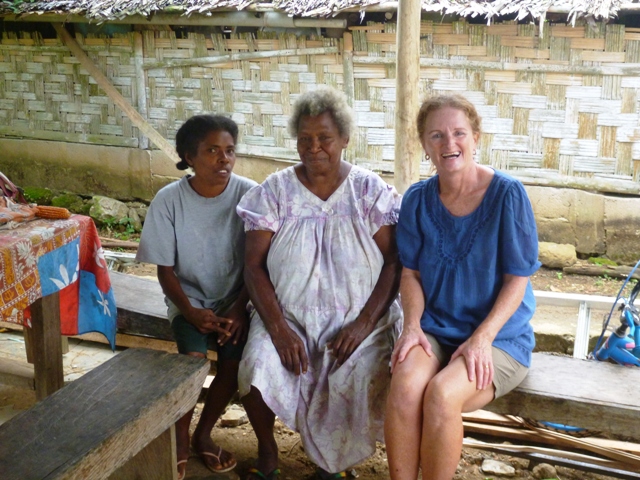
Simon, Bernadettes son has taken over the farm and was working hard clearing trees and vines to plant Sandalwood for the families future. We’d heard him calling the cows and them talking back He had 30 cows that he sells locally for ceremonies and food. He’d actually worked in NZ under one of the programs the government has for Vanuatu people farming but had returned to help his mother.
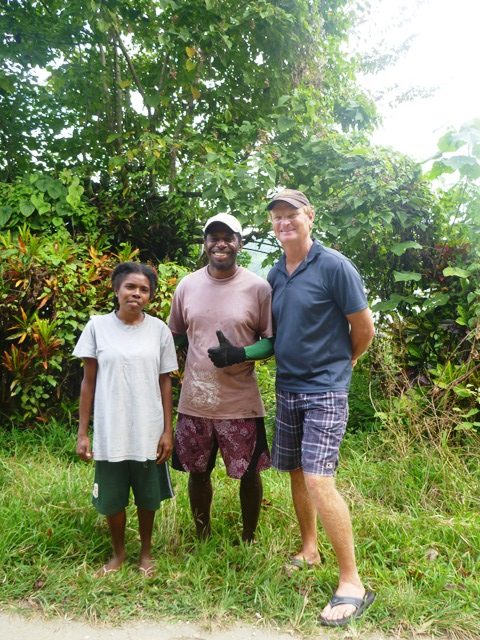
Awei, Maskelyn Islands
Awei is a very small island with 1 family on it, at the Southern end of Malekula within the Maskelyne Islands. It has a protected bay behind the reef where we were anchored and where the local women from Avokh Island 2 miles away come to fish. It was busy with about 10 canoes of women when we arrived, all anchored in the reef and casting lines. Apparently the supply ship comes Tuesday evening so Mondays & Tuesdays the ladies are out fishing to gather fish, mud crabs (found in the mangroves) and lobster to sell to the ship returning to Port Villa and in return buy staple supplies.
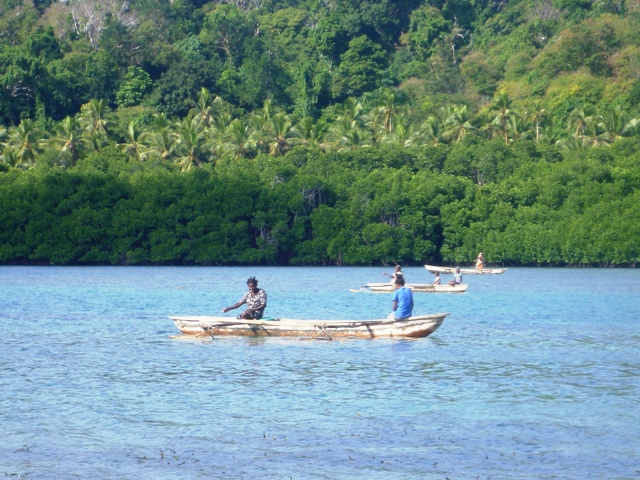
The locals would paddle past to their gardens in the hills on South Malekula returning to Avokh village daily with produce and firewood.
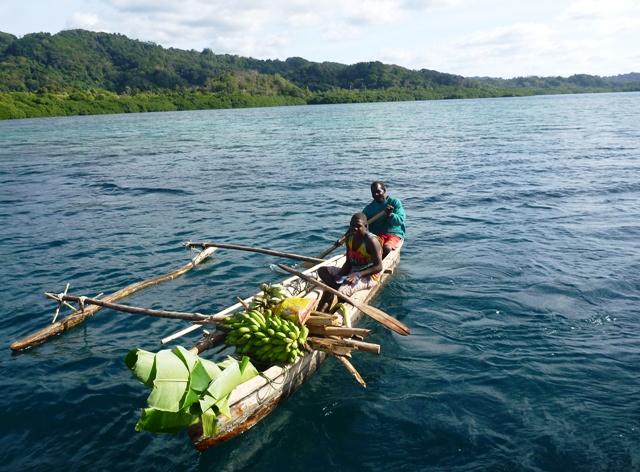
Ledo & Crème stopped by to chat after being at their garden and offered us a mud crab which was huge and that they sell to the supply ship for 1000 vatu (US$10). We watched her pole the canoe back across the reef towards Avokh. Some canoes have made sails thanks to material given from the yachts, which definitely looked easier than poling.
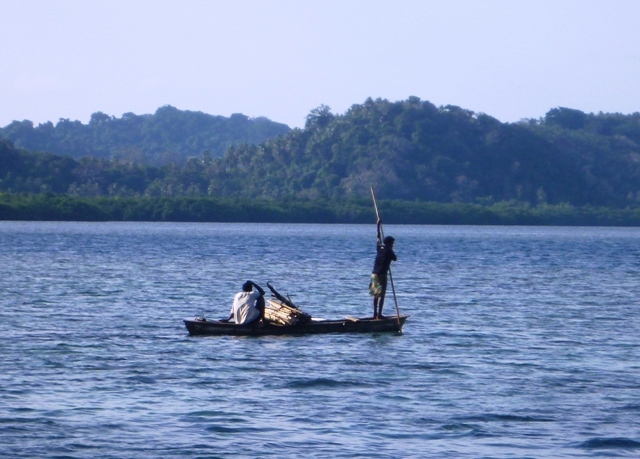
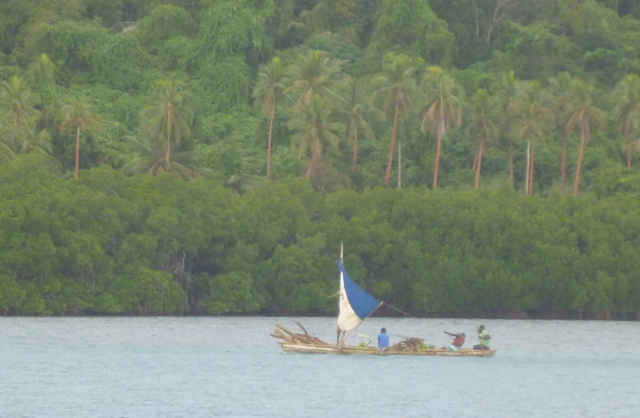
Ledo had invited us to visit the village of Avokh where approximately 200 people live in traditional flax houses. It was definitely a crowded village. Chief Kaiser was in Port Villa so one of the other men welcomed us and took us to meet Ledo. The ladies were all busy weaving mats from flax but all stopped to talk with us and introduce their families.
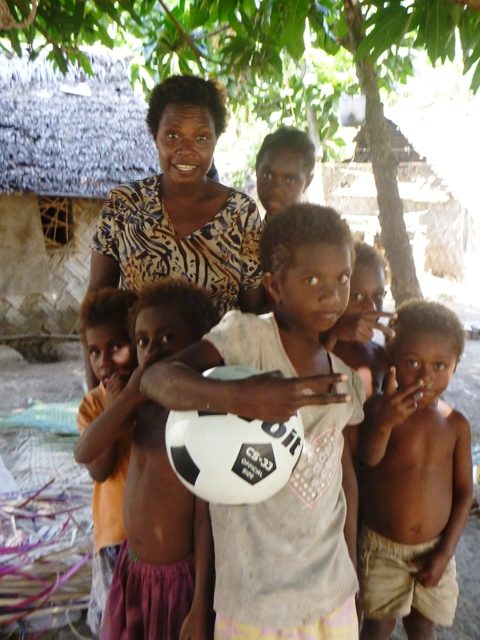
It was school holidays so the kids were about and eager to talk to us and wanted to see a picture of themselves on my camera. We gave them a soccer ball but learnt that they are not allowed to play with it on Avokh. Sports can only be played on the school grounds at the island across the reef from Avokh. The school which teaches English has approx 80 children and 3 teachers. When we asked how the children get over to school the response was “the kids have their own canoes so paddle to school”. Like everywhere we have been, the people here were very friendly but you could see that life on Avokh was tougher than the other islands we have been to.
Epi Island
With South winds we took advantage and headed over to Lamen Bay on EPI island. It’s a nice protected bay from the trade winds with some friendly resident dugongs and lots of large turtles. We’ve been very lucky and seen dugongs (sea cow) in every bay we have been in around Central Vanuatu. Its tough getting pictures of them though. Kayaking ashore one morning a dugong surfaced and breathed right beside us and then just hung out with us. They are typically shy and don’t really interact but it seemed like this guy wanted some company and was checking out our kayaks.
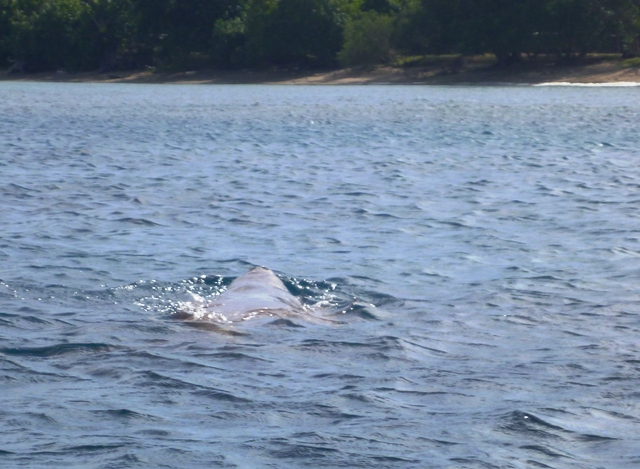
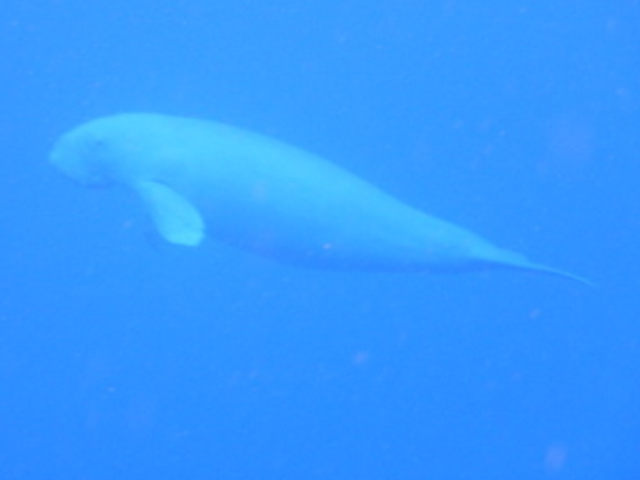
Ashore we wandered around and ended up going to lunch at Bennington’s restaurant for Roast chicken and fresh salad with Kumera (sweet potatoe), which was very tasty. Benny, as she likes to call herself, has travelled throughout NZ and Australia and worked on various farms. She now has a farm of her own and sells produce and fresh bread to the sailors. So of course I had to buy lettuce, tomatoes, bok choy, beans, bananas and couldn’t miss her coconut bread. All very tasty especially the lettuce as we hadn’t had a salad for 4 months.
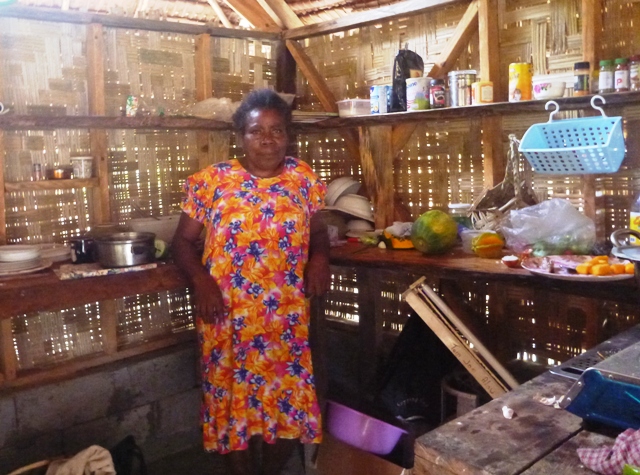
There is a Primary and high school here in the bay and the school children are responsible for tending their own gardens. We saw a 6yr old with her Mum returning from their gardens and the little girl was carrying her own spade. So cute. We wandered up one of the roads to look at the gardens but all you could see was walking trails that headed into what looked like jungle to us. Lots of banana trees, papaya trees and taro on the side of the road.
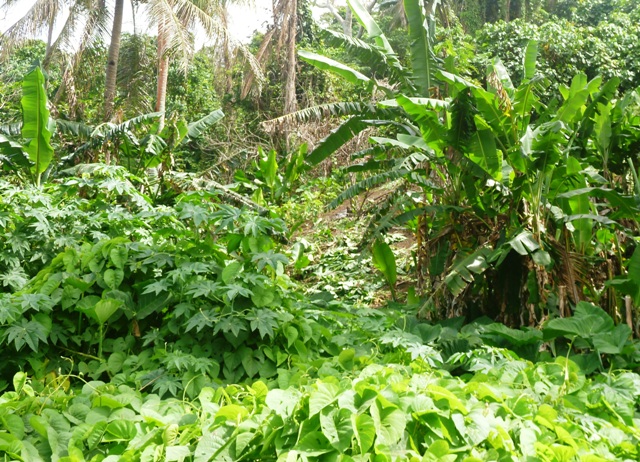
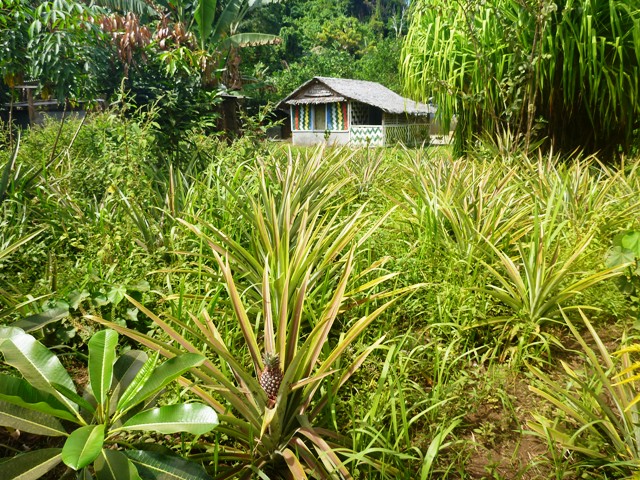
Along the EPI coast we stopped at Revolieu Bay where we got a great night sleep behind a reef to then head south to Mele Bay on Efate again. Port Havannah on the way was where the US had stored all their ships in WW11 but it has been closed to yachts for the last month because of a Coconut Rhinoceros Beetle infestation, so we had to pass by. Shame as its meant to be pretty.
We relaxed for a few days at Mele Bay but before we knew it a window appeared to go to New Caledonia so we caught the bus into town to clear out. The officials were all at the port so it was all very efficient.
Vanuatu has been a great stop with such friendly and happy people.
